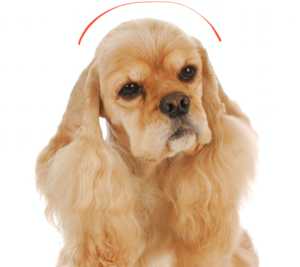
No one likes to look ignorant, but the problem with ignorance is that it “sticks,” until one overcomes it with data.
(Enter trumpets blaring): NPDD is here to help! If you have trouble making a distinction between an (American) Cocker Spaniel and an English Cocker Spaniel, you are not alone. Most of us can tease out the difference when the dogs are standing next to each other, but one by itself? Not so much.
This isn’t a post about breed histories, it’s to help you tell one from the other. And with apologies to the fabulous owners and breeders of both, what comes next may be cringe worthy to the experienced.
When spotting a dog, most of us look at the dog’s face first, and that face appears on a head. If you can remember that America’s past time is baseball, and that baseballs are round, you’ll always remember that an (American) Cocker Spaniel has a rounded skull. Don’t take our word for it, trust the AKC breed standard: “Skull: Rounded but not exaggerated with no tendency toward flatness.”

This is nothing like the English Cocker head which is “arched and slightly flattened when seen both from the side and from the front:”

Both breed standards call for a dog that has similar traits: a sturdy, compact, deep chested dog that has as its job, finding, flushing, and retrieving game in rugged vegetation. These are dogs that can plow under and through brush – but for our purposes – which is to offer a mnemonic devices to tell one breed from the other in front of a proud owner who will be dazzled by your breed knowledge, you start with that head. It’s one of the most important features that defines breed type, and while there are certainly other important aspects that have taken fanciers years to learn and appreciate, the head will set you free.
If you want to know more, understand that the Cocker Spaniel (sometimes referred to as the American Cocker Spaniel) has clearly defined eyebrows and a pronounced stop, another dead-give-away. The English Cocker Spaniel’s eyebrows are not as pronounced, and to the American Cocker’s head’s round eyes that look directly forward, the English Cocker’s eyes are slightly oval and set wide apart.
We don’t mean to give short shrift to two fabulous breeds that have essential differences that go well behind their heads, but for readers who want the “Cliff Notes” version on how to distinguish the two, we say, “start with the head.”

Thank you for the “cliff note” difference between the two cockers. One other thing that causes a lot of confusion is that that depending on which side of “the pond” you live cocker means either American Cocker or English Cocker.
Great point, Mary! And it does cause confusion, that’s for sure.